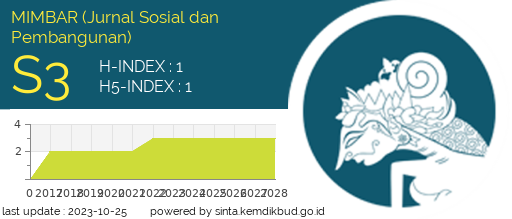The Use of Instagram in the Halal Food Information Sharing among Virtual Communities
DOI:
https://doi.org/10.29313/mimbar.v39i1.2157Keywords:
Instagram, Social Media, Sharing, Virtual CommunicationAbstract
Virtual communities refer to people who use and share information on social media through the Internet. A virtual community that cares about the Halal lifestyle creates and shares content widely using Instagram to raise people’s awareness of halal food. This article explores the use of Instagram in sharing information on halal food. This article is qualitative in nature and applies Virtual ethnography. The research subjects are the Halal Corner team and followers. The data is collected through observation, interview, and documentation. They are analyzed using the virtual ethnography method by Boellstorff. This article finds numerous reasons to share information on halal food through Halal Corner Instagram. The reasons are effective communication, social connectedness, content production, content characteristics and features, and reliable information source.
References
Castells, M. (2009). Communicaton Power. Oxford University Press.
Chadwick, A., Vaccari, C., & O’Loughlin, B. (2018). Do tabloids poison the well of social media? Explaining democratically dysfunctional news sharing. New Media and Society, 20(11), 4255–4274. https://doi.org/10.1177/1461444818769689
dos Santos, M. A., Lycarião, D., & de Aquino, J. A. (2019). The virtuous cycle of news sharing on Facebook: Effects of platform affordances and journalistic routines on news sharing. New Media and Society, 21(2), 398–418. https://doi.org/10.1177/1461444818797610
Hine, C. M. (2008). Virtual Ethnography. In L. M. Given (Ed.), The Sage Encyclopedia of Qualitative Research Methods (p. 921). Sage.
Indonesian Ministry of National Planning. (2018). Indonesia Islamic Economic Masterplan 2019-2024. In Indonesian Ministry of National Development Planning.
Ismail, H. A. (2020). Users’ intention to share knowledge using wiki in virtual learning community. International Journal of Information and Communication Technology Education, 16(1), 1–15. https://doi.org/10.4018/IJICTE.2020010101
John, N. A. (2012). Sharing and Web 2.0: The emergence of a keyword. New Media and Society, 15(2), 167–182. https://doi.org/10.1177/1461444812450684
Kamarulzaman, Y., Veeck, A., Mumuni, A. G., Luqmani, M., & Quraeshi, Z. A. (2015). Religion, markets, and digital media: seeking halal food in the U.S. Journal of Macromarketing, 36(4), 400–411. https://doi.org/10.1177/0276146715622243
Kaplan, A. (2018). Social Media. In B. Warf (Ed.), The Sage Encyclopedia of The Internet. Sage.
Kementerian Agama RI. (2020). Rencana Strategis Kementerian Agama Tahun 2020-2024. 1–309. https://bali.kemenag.go.id/uploads/media/2020/07/RENSTRA_KEMENAG_2020-2024.pdf
Khasanah, M. (2020). Peranan media sosial sebagai agen sosialisasi halal dalam membangun kesadaran halal: studi netnografi. Al Tijari, 5(2), 139–157. https://doi.org/dx.doi.org/10.21093/at.v5i2.2116
Leaver, T., Highfield, T., & Abidin, C. (2020). Instagram: Visual social media cultures. John Wiley & Sons. https://doi.org/10.1177/2050157920928534b
Lee, C. S., Abu Bakar, N. A. B., Muhammad Dahri, R. B., & Joanna Sin, S. C. (2015). Instagram this! sharing photos on Instagram. International Conference on Asian Digital Libraries. https://doi.org/10.1007/978-3-319-27974-9_13
Li, X. (2011). Factors influencing the willingness to contribute information to online communities. New Media and Society, 13(2), 279–296. https://doi.org/10.1177/1461444810372164
Lindlof, T. R. (2009). Interpretive Communities Theory. In S. W. Littlejohn & K. A. Foos (Eds.), Encyclopedia of Communication Theory. Sage.
Lovejoy, K., & Saxton, G. D. (2012). Information, community, and action: how nonprofit organizations use social media. Journal of Computer-Mediated Communication, 17(3), 337–353. https://doi.org/10.1111/j.1083-6101.2012.01576.x
Maimone, F. (2017). Intercultural knowledge sharing in MNCs: A glocal and inclusive approach in the digital age. In Intercultural Knowledge Sharing in MNCs: A Glocal and Inclusive Approach in the Digital Age. Palgrave Macmillan. https://doi.org/10.1007/978-3-319-57297-0
Mostafa, M. M. (2020). Information Diffusion in Halal Food Social Media: A Social Network Approach. Journal of International Consumer Marketing. https://www.tandfonline.com/doi/abs/10.1080/08961530.2020.1818158
Nasrullah, R. (2020). Media Sosial Perspektif Komunikasi, Budaya, dan Sosioteknologi (Cetakan Ke). Simbiosa Rekatama Media.
Purnamasari, O. (2020). Perilaku komunikasi pada komunitas virtual terkait diet makanan untuk anak autis. IPB.
Pusat Bantuan. (2023a). Melihat pencarian terbaru di Instagram. Instagram. https://help.instagram.com/466613274883864/?helpref=uf_share
Pusat Bantuan. (2023b). Pedoman Komunitas. Instagram. https://help.instagram.com/477434105621119
Rachmandani, R. E., Purnomo, E. P., & Kasiwi, A. N. (2020). The Electability Level of PDI-P on Social Media of Instagram. MIMBAR : Jurnal Sosial Dan Pembangunan, 36(2), 271–279. https://doi.org/10.29313/mimbar.v36i2.5457
Rohman, A., Pang, N., & Pitaloka, D. (2018). The episodes of a facebook group for information sharing in the Ambon 2011 conflict prevention movement, Indonesia. Information Communication and Society, 23(4), 539–554. https://doi.org/10.1080/1369118X.2018.1521456
Sayogo, D. S. (2018). Online traceability for halal product information: perceptions of Muslim consumers in Indonesia. Journal of Islamic Marketing, 9(1), 99–116. https://doi.org/10.1108/JIMA-07-2016-0057
Schoening, G. T., & Anderson, J. A. (1995). Social action media studies: foundational arguments and common premises. Communication Theory, 5(2), 93–116. https://doi.org/10.1111/j.1468-2885.1995.tb00100.x
Sloan, S., Bodey, K., & Jones, R. G. (2015). Knowledge sharing in online brand communities. Qualitative Market Research: An International Journal, 18(3), 298–319.
Sproull, L. (2004). Online Community. In H. Bidgoli (Ed.), The Internet Encyclopedia (Volume 2). John Wiley & Sons, Inc.
Susanti, S., Sukaesih, S., & Koswara, I. (2020). Promotional Messages on Social Media Marketing for Natural Seeds Jewelry. MIMBAR : Jurnal Sosial Dan Pembangunan, 36(1), 230–239. https://doi.org/10.29313/mimbar.v36i1.5800
Tamí-Maury, I., Brown, L., Lapham, H., & Chang, S. (2017). Community-based participatory research through virtual communities. Journal of Communication in Healthcare, 10(3), 188–194. https://doi.org/10.1080/17538068.2017.1337604
Van Dijck, J. (2013). The Culture of Connectivity: A Critical History of Social Media. In The Culture of Connectivity: A Critical History of Social Media. Oxford University Press.
We Are Social. (2021). Digital 2021: Indonesia. Hootsuite. https://datareportal.com/reports/digital-2021-indonesia
We Are Social. (2022). Digital 2022 Indonesia. Hootsuite.
Westerman, D., Spence, P. R., & Van Der Heide, B. (2014). Social media as information source: recency of updates and credibility of information. Journal of Computer-Mediated Communication, 19(2), 171–183. https://doi.org/10.1111/jcc4.12041
World Population Review 2021. (2021). Muslim Countries 2021. https://worldpopulationreview.com/country-rankings/muslim-countries
Yusoff, S. Z., & Adzharuddin, N. A. (2017). Factor of awareness in searching and sharing of halal food product among muslim families in Malaysia. SHS Web of Conferences, 33. https://doi.org/10.1051/shsconf/20173300075
Downloads
Published
Issue
Section
License
Copyright (c) 2023 MIMBAR : Jurnal Sosial dan Pembangunan

This work is licensed under a Creative Commons Attribution-NonCommercial-ShareAlike 4.0 International License.














